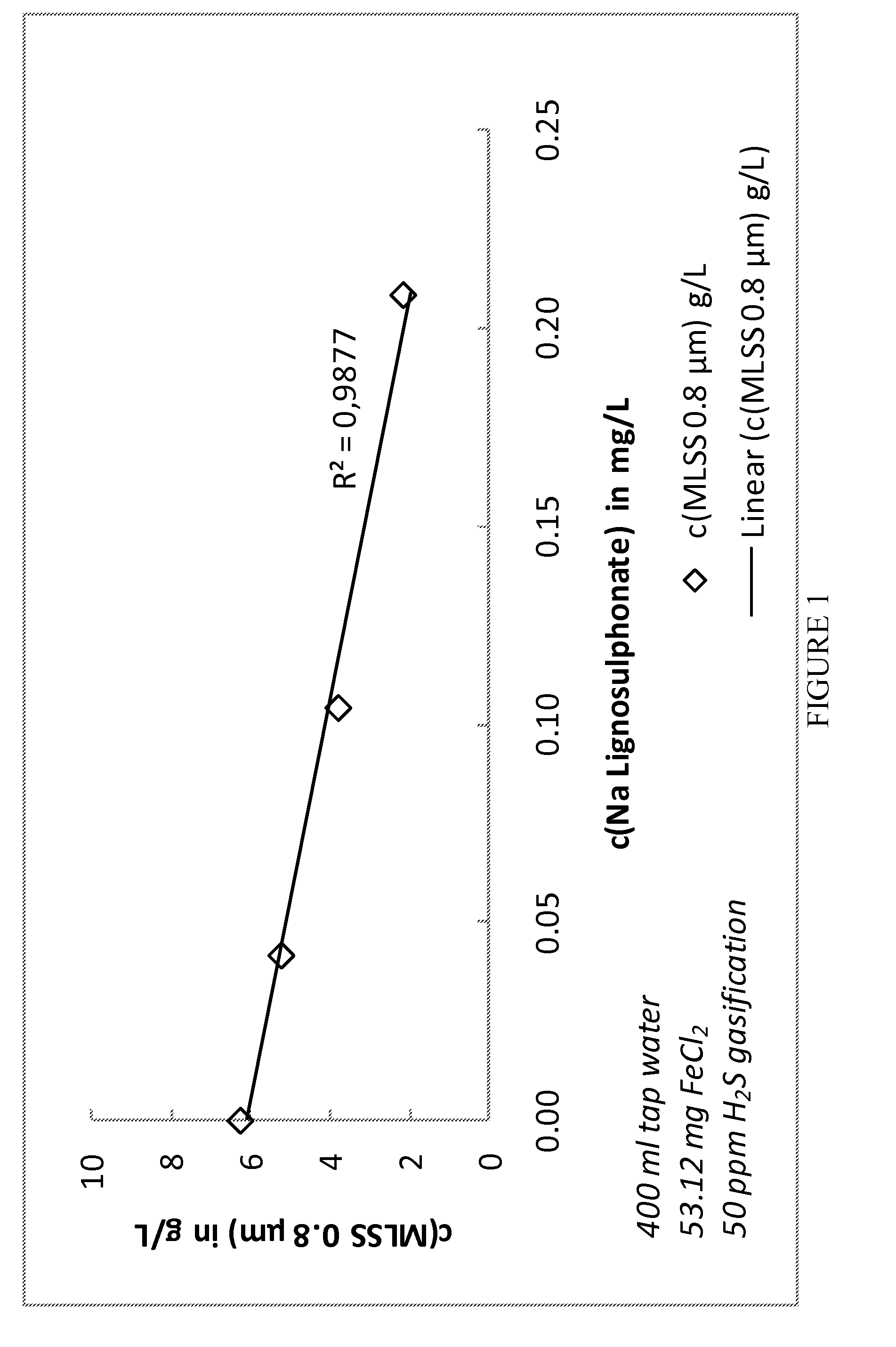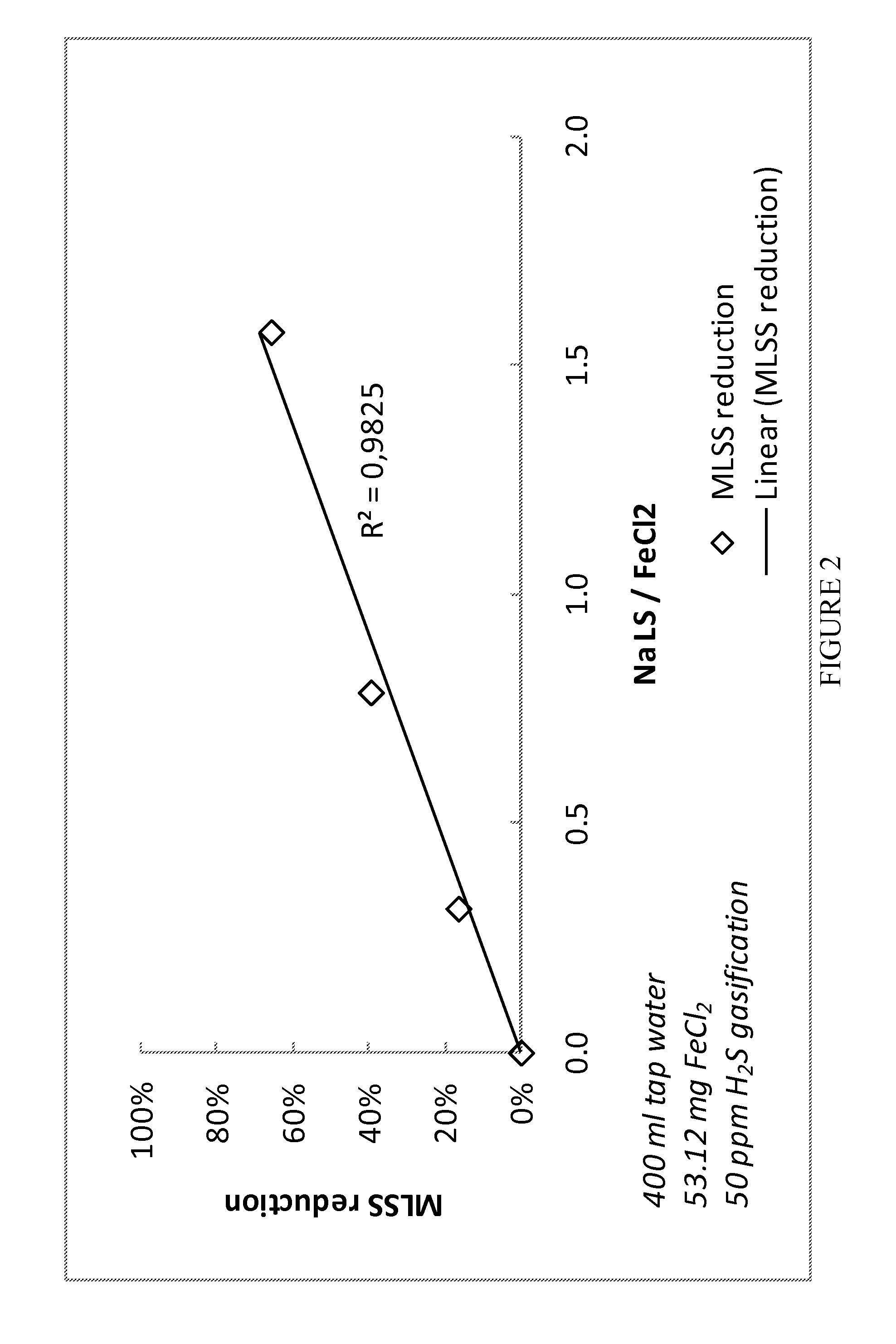Method to support an emission-free and deposit-free transport of sulphide in sewer systems to waste water treatment plants and agent for use therein
- Summary
- Abstract
- Description
- Claims
- Application Information
AI Technical Summary
Benefits of technology
Problems solved by technology
Method used
Image
Examples
case study 1
Effect
[0048]In a lab scale test batch reactors were used. Samples of conditioning fluids with FeCl2 as iron source were produced. In one reactor additionally LS was dosed. H25 was bubbled into the reactors containing dilutions of these conditioning fluids. After a certain time of experiment Fe2+ was consumed and the maximum of FeS formed. In the non-LS-treated reactors insoluble solids were produced. In the LS treated samples FeS was also formed (dark grey colour) but particles were invisible small—the liquid stayed clear.
case study 2
e Test:
[0049]In a lab scale test batch reactors were used. 400 ml tap water was mixed with 0.5 ml of a 11% FeCl2 solution. Different dosages of sodium lignosulphonate LS solution (20%) were added (0.0 ml, 0.1 ml, 0.25 ml and 0.5 ml). The samples were aerated with 50 ppm H2S in nitrogen gas. Whereas the non-LS containing sample turned turbid, the LS treated samples stayed clear independently from LS dosage. The content of mixed liquor suspended solids (MLSS) was measured using 0.8 μm filters. The result indicates strongly a linear dose response relationship between LS and suspended solids as the reduction of MLSS has a linear dependency to the ration of Na LS to FeCl2. The results are shown in FIGS. 1 and 2.
case study 3
Effects:
[0050]In a lab scale test batch reactors were used. 400 ml tap water was mixed with 0.5 ml of a 11% FeCl2 solution. Different dosages of sodium lignosulphonate solution (20%) were added (0.0 ml, 0.1 ml and 0.25 ml). The samples were aerated with 50 ppm H2S in nitrogen gas. The content of mixed liquor suspended solids (MLSS) was measured using 0.8 μm filters. The effect of keeping solids in solution seems to be time independent within at least one hour. The samples were aerated for additionally one hour. At that stage the LS treated samples had—following the LS addition—a more or less dark brown colour. Samples were stored for 48 h without H25 addition but air access via sample surface. After that period of time samples were visually checked: The non-LS treated sample was clear and solids had settled down. All the LS treated samples were clear without any precipitation and the colour in the LS treated samples had changed from brownish to green. The results are represented in ...
PUM
 Login to View More
Login to View More Abstract
Description
Claims
Application Information
 Login to View More
Login to View More - Generate Ideas
- Intellectual Property
- Life Sciences
- Materials
- Tech Scout
- Unparalleled Data Quality
- Higher Quality Content
- 60% Fewer Hallucinations
Browse by: Latest US Patents, China's latest patents, Technical Efficacy Thesaurus, Application Domain, Technology Topic, Popular Technical Reports.
© 2025 PatSnap. All rights reserved.Legal|Privacy policy|Modern Slavery Act Transparency Statement|Sitemap|About US| Contact US: help@patsnap.com



